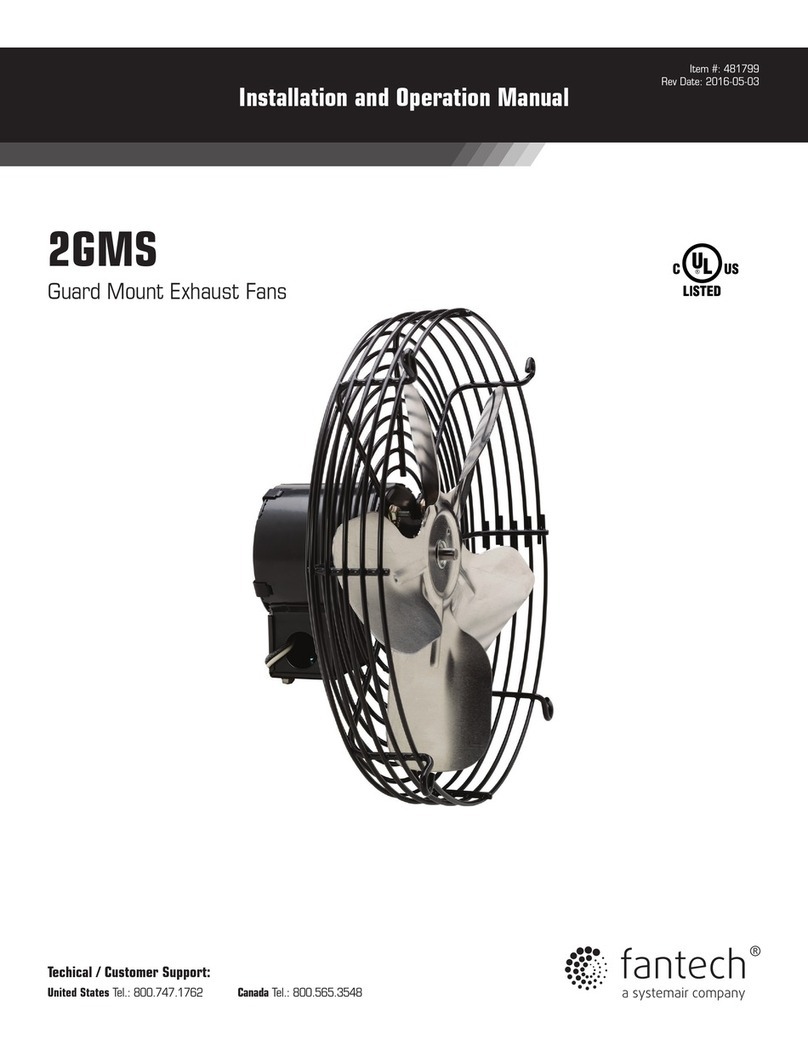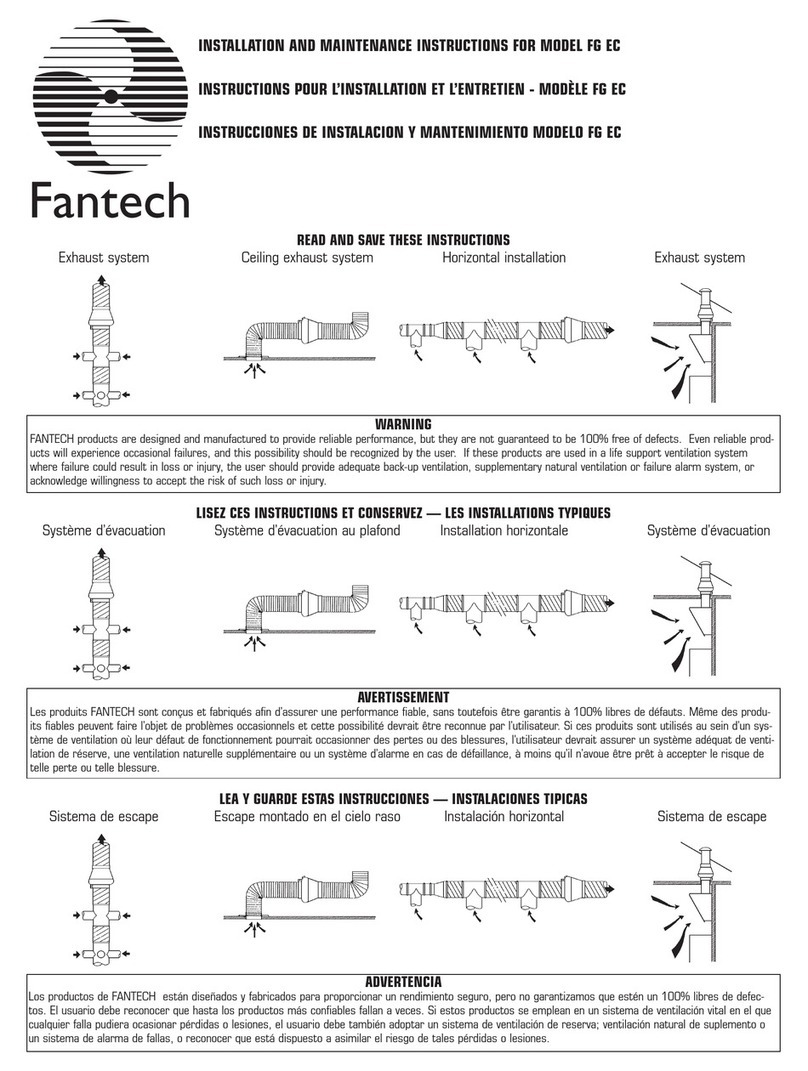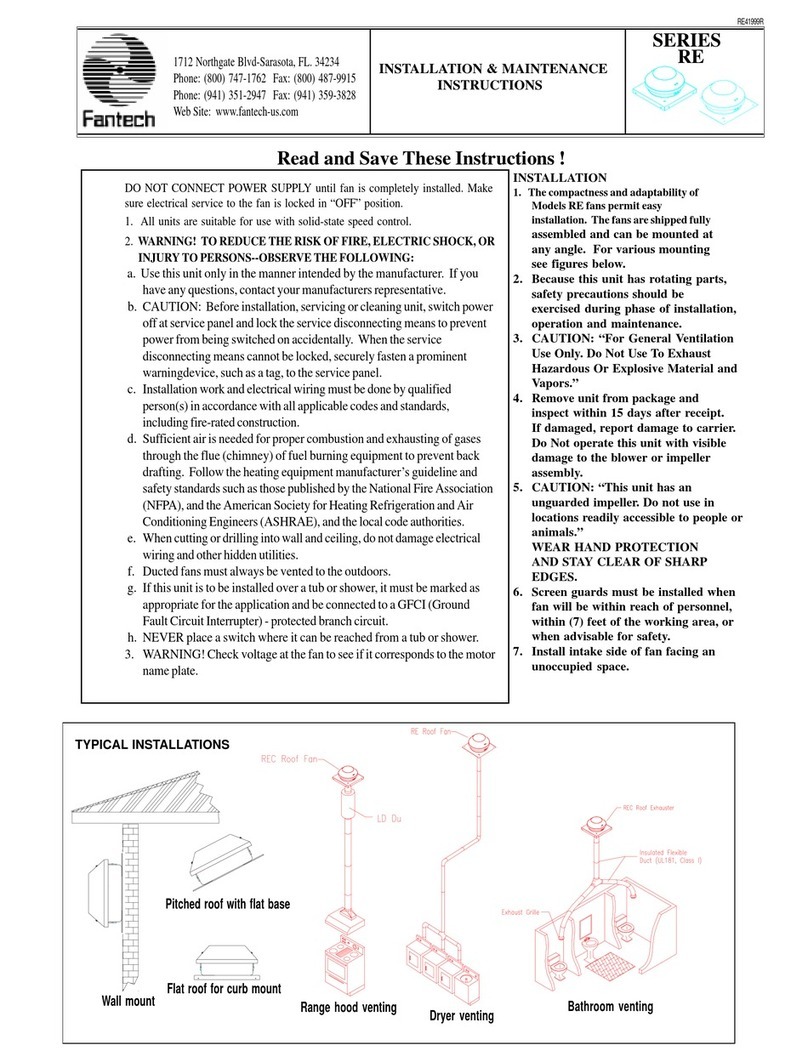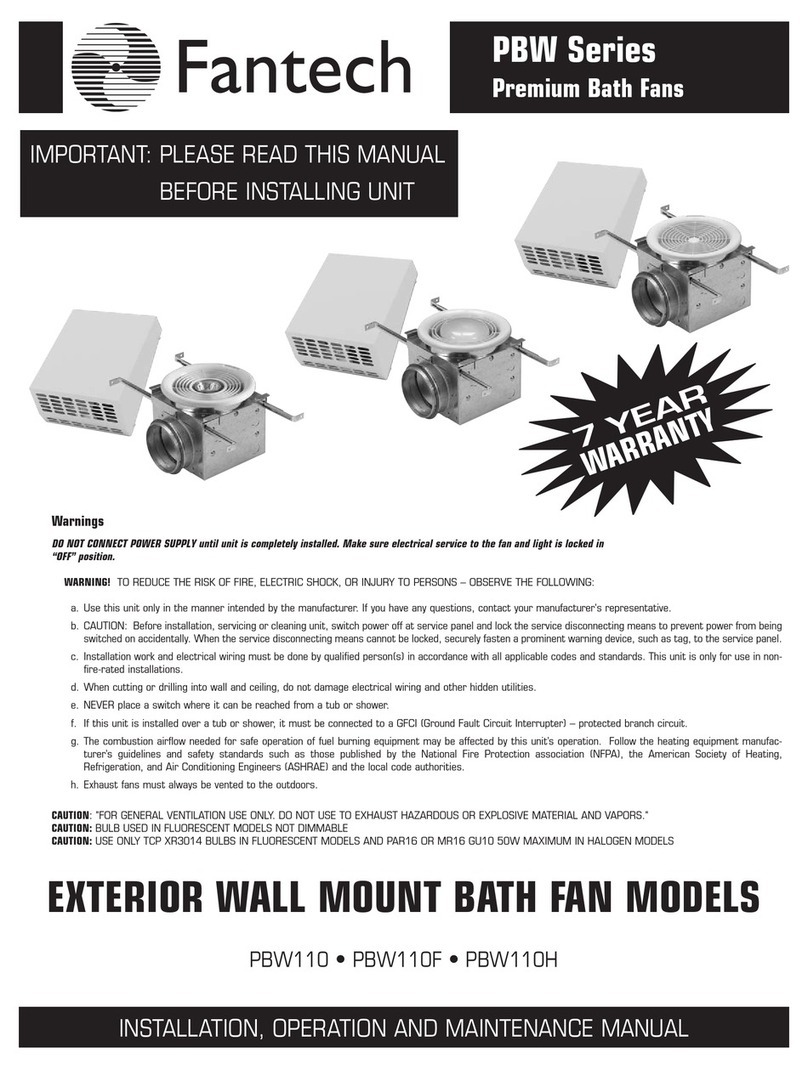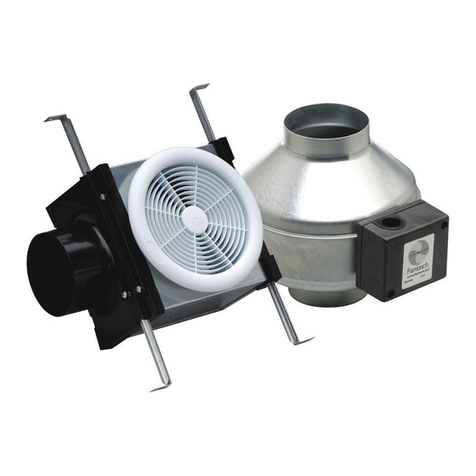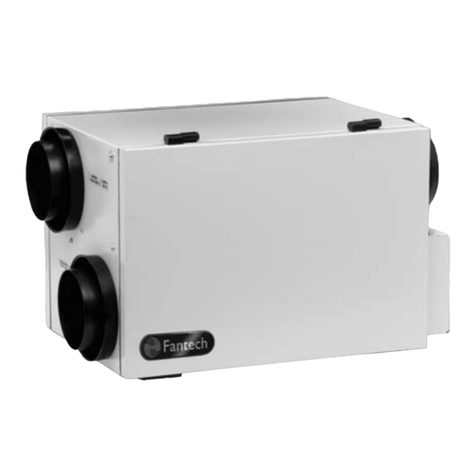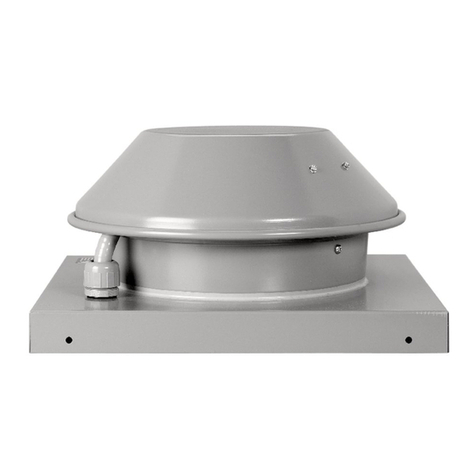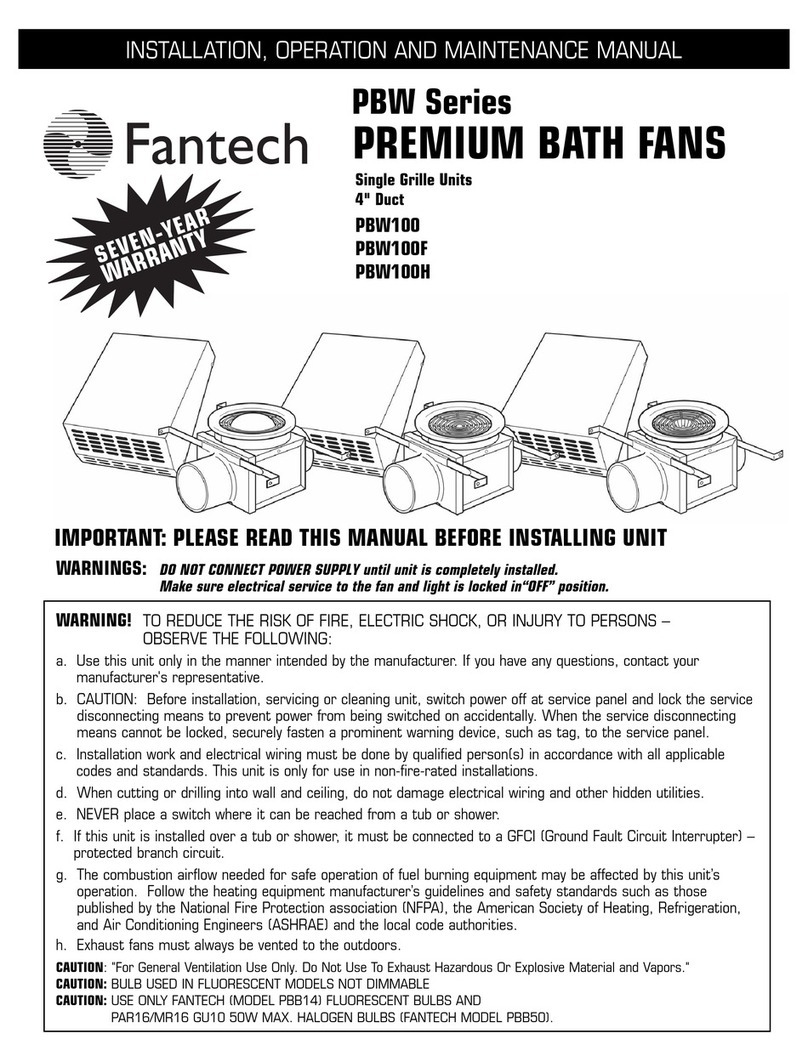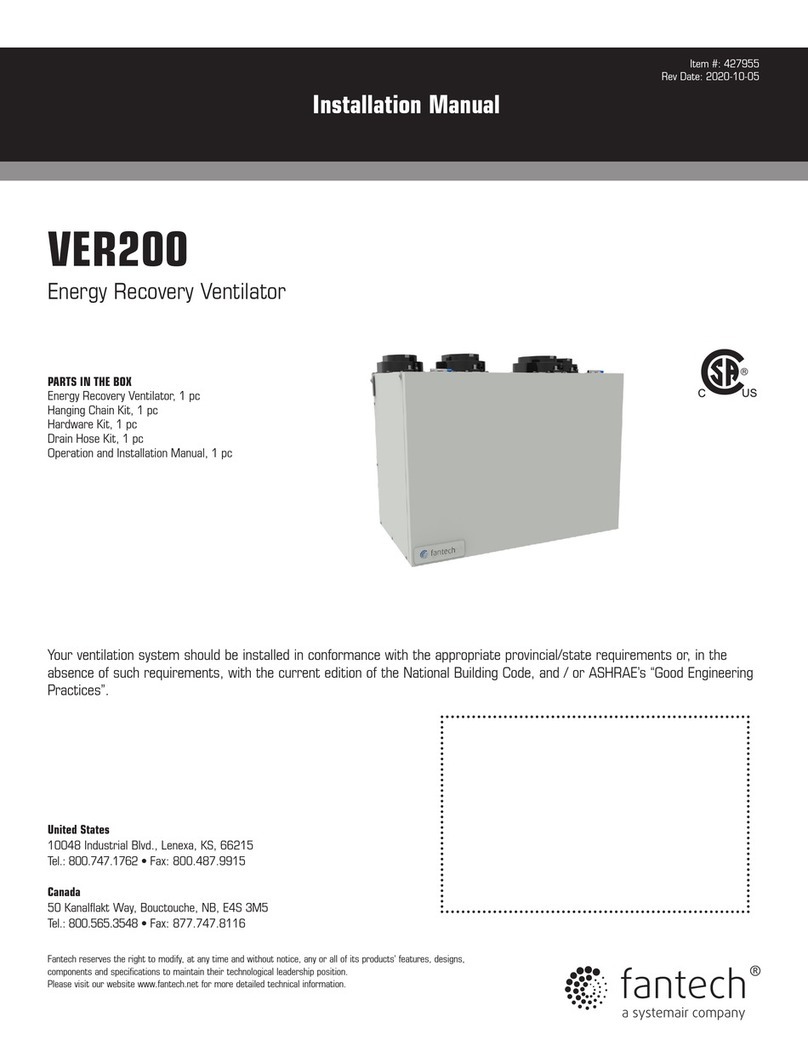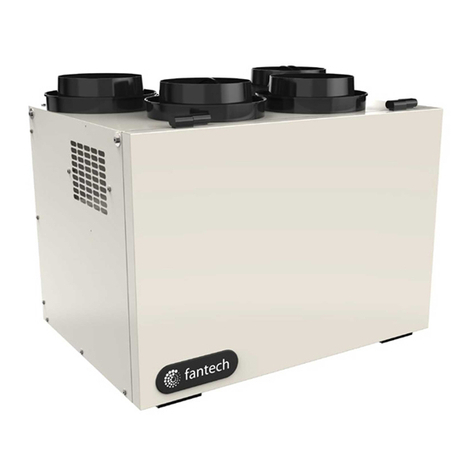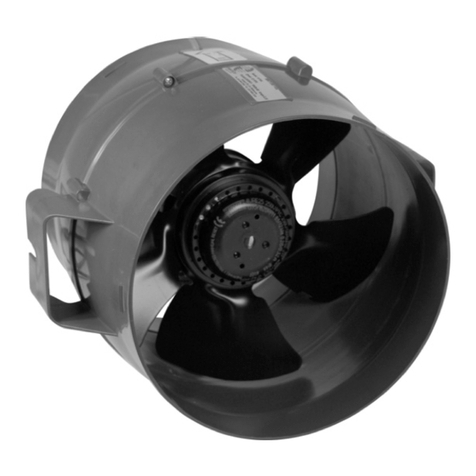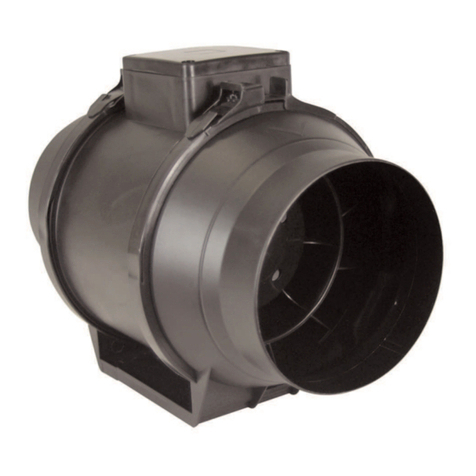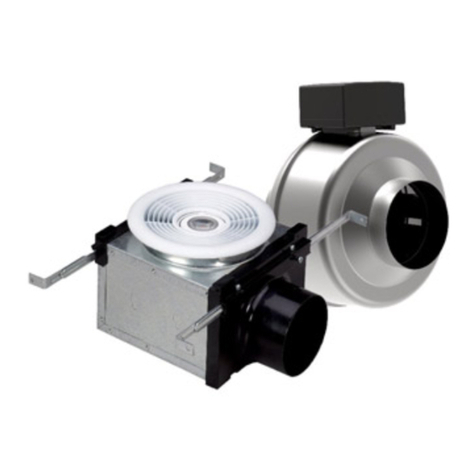
98
fantech fantech
* Ductwork layout may differ depend-
ing on model
DIRECT CONNECTION of the ERV SUPPLY AIR STREAM to the SUPPLY AIR SIDE on the
FURNACE & EXHAUST AIR STREAM to the FURNACE COLD AIR RETURN
SIMPLIFIED INSTALLATION (GOOD)
OPTION 2
1. Furnace blower must operate when ventilation from ERV is required. The
furnace should be set to run continuously or interlocked with ERV. See
furnace electrical connection on page 17.
2. Due to the differences in pressure between the ERV and the equipment it is
being connected to, the ERV‘s airflow must be balanced on site, using the
procedure found section "AIRFLOW BALANCING".
* In the case of a multi-zone system, please contact Fantech customer
service prior to installing any installation type requiring the use of the
furnace interlock"
Installation examples (Cont'd)
In the case of a simplified
installation, Option 1 is
recommended.
Air from inside
* Unit air flow should be balanced while ERV is on "Normal" speed and
furnace blower is running.
Outside
Fresh air to living areas
1 m (3' 3") min. recommended
Cold air
return
ERV/Furnace ducting for Simplified Installation - Option 2
Suggested installation for:
• When bathroom and
kitchen already have local
exhaust system
• May be suitable for
retrotting
Benets: Least expensive
installation type
Fantech energy recovery ventilators (ERV) that use a supply fan shutdown for frost
prevention do not include an outdoor air motorized damper. If you are using a simplied
installation, i.e. connecting the ERV supply air duct to a furnace's return air duct, the ERV
must operate continuously. When the ERV is turned off, no warm exhaust air will ow
through the ERV but the furnace's fan will continue to draw in outdoor air directly into the
furnace. If it's cold outside, cold air will be introduced, without re-heating, directly into
the furnace.
If the ERV is installed such that the homeowner may turn off the ERV during the winter, we
recommend installing a motorized damper between the ERV's supply air and the furnace's
return air duct that closes when the ERV is not operating. See wiring diagram (gure 1).
Damper
Motor
24 VAC Transformer
COM NO
ERV Furnace interlock
See page 17.
24V
120V
Figure 1
*Transformer and Damper motor not included
Motorized
Damper
Motorized
Damper
Stale air to
outside
Fresh air from
outside
EXTERIOR DUCTING INSTALLATION
WEATHERHOOD LOCATION
• Decide where your intake and exhaust hoods will be located.
Locating the Intake Weatherhood
• Should be located upstream (if there are prevailing winds) from the
exhaust outlet.
• At a minimum distance to 900 mm (3') away from dryer vents and furnace
exhaust (medium or high efficiency furnaces), driveways, oil fill pipes, gas
meters, or garbage containers.
• At a minimum height of 460mm (18’’) above the ground, or above the level
of expected snow accumulation.
• Ideally, keep weatherhoods 1m (3') from corners.
• Do not locate in the garage, attic, crawl space, or underneath deck.
Locating the Exhaust Weatherhood
• At least 460mm (18") above ground or above the depth of expected snow accumulation
• Ideally, keep weatherhoods 1m (3') from corners.
• Not near a gas meter, electric meter or a walkway where fog or ice could create a hazard
• Do not locate in a garage, workshop or other unheated space
INSTALLING THE DUCTING TO THE WEATHERHOODS
A well designed and installed ducting system will allow the ERV to operate at its
maximum efficiency. The inner liner of the flexible insulated duct must be secured to the
sleeve of the weatherhood (as close to the outside as possible) and to the appropriate duct
connection on the ERV. The insulation should remain full and not crushed. The outer liner,
which acts as a vapor barrier, must be completely sealed to the outer wall and the ERV
using tape and/or caulking. A good bead of high quality caulking (preferably acoustical
sealant) will seal the inner flexible duct to both the ERV duct connection and the
weatherhood prior to securing them.
To minimize airflow restriction, the flexible insulated duct that connects the two outside
weatherhoods to the ERV should be stretched tightly and be as short as possible.
Twisting or folding the duct will severely restrict airflow.
See “Installation Diagram Examples” for installation examples.
1Using the duct connection of
the outside hood, outline the
intake & exhaust holes to be
cut. The holes should be slightly
larger than the duct connection
to allow for the thickness of the
insulated flexible duct. Cut a
hole for both the intake and
exhaust hoods.
3 Push the hood into the opening
and then attach the hood to the
outside wall with mounting
screws.
Repeat the installation
procedure for both the supply
and exhaust hoods.
2Pull the insulated flexible duct
through the opening until it is
well extended and straight.
Slide the duct’s inner vinyl sleeve
over the hood duct connection
and secure. Pull the insulation
over the duct and pull the vapor
barrier over the sleeve. Secure
with appropriate tape or
sealant.
4Using a caulking gun, seal
around both hoods to prevent
any leaks.
STEPS FOR HOOD INSTALLATION:
36" (1m)
min.
INTAKE
OUTSIDE CORNER INSIDE CORNER
EXHAUST
18" (460mm) min. 18" (460mm) min.
6' (2m)
min.
36” (1m)
min.

